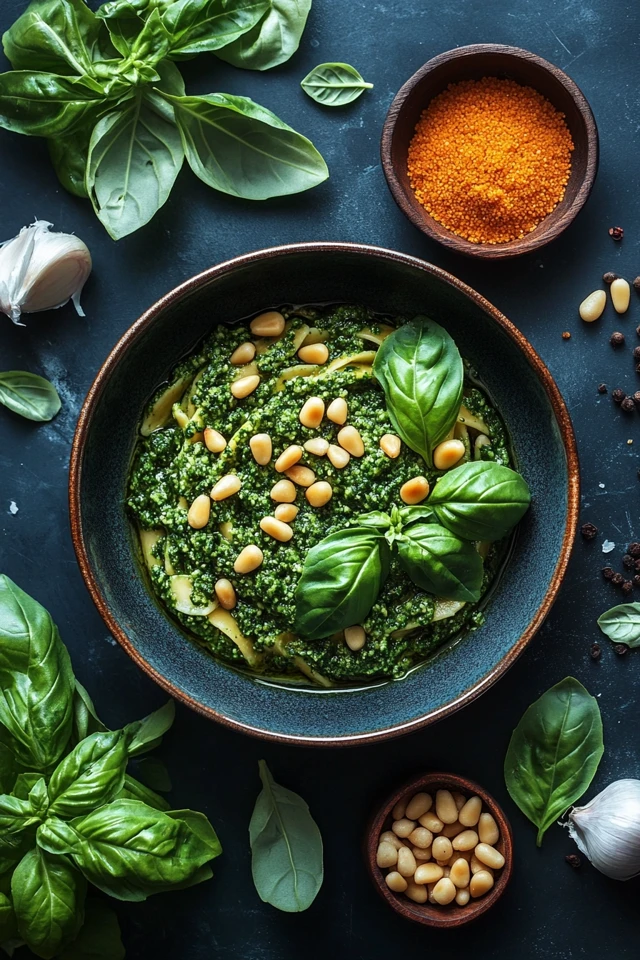Introduction
Indulge in the timeless flavors of Vegan Italian Pesto Pasta: Classic & Herbaceous! This delightful dish brings together the vibrant freshness of basil pesto with perfectly cooked pasta, creating a harmonious blend of textures and tastes that are both satisfying and nutritious. Ideal for weeknight dinners, casual gatherings, or a comforting meal any time of the year, this vegan pesto pasta is a testament to the beauty of plant-based cooking without compromising on flavor or tradition.
Pesto, a staple of Italian cuisine, is renowned for its aromatic herbs, rich nuts, and creamy texture. Our vegan version captures this essence by substituting traditional Parmesan cheese with plant-based alternatives, ensuring that everyone can enjoy this classic dish. Paired with your favorite pasta, whether it’s spaghetti, penne, or fusilli, this pesto pasta offers a versatile and wholesome meal option that celebrates the best of Italian culinary heritage. In this comprehensive guide, we’ll explore the benefits of vegan Italian pesto pasta, provide a detailed recipe, and share tips and variations to customize it to your liking. Let’s embark on a flavorful journey to create a classic and herbaceous vegan Italian pesto pasta that will become a beloved favorite in your kitchen!
Why Choose Vegan Italian Pesto Pasta?
Opting for Vegan Italian Pesto Pasta offers a multitude of benefits that cater to health, ethical, and culinary preferences. Here’s why this dish should become a staple in your meal planning:
Health-Conscious Choice
- Nutrient-Rich: Packed with fresh basil, pine nuts, and nutritional yeast, this pesto provides a balanced mix of vitamins, minerals, and healthy fats essential for overall health.
- Heart-Healthy Fats: The use of olive oil and pine nuts introduces heart-healthy monounsaturated and polyunsaturated fats, promoting cardiovascular health and satiety.
- High in Antioxidants: Basil and garlic are rich in antioxidants that help combat free radicals, reduce inflammation, and support immune function.
- Plant-Based Protein: Pine nuts and nutritional yeast contribute to the protein content, supporting muscle maintenance and overall well-being.
Ethical and Sustainable
- Plant-Based: Embracing a plant-based meal reduces your carbon footprint and supports sustainable eating practices, benefiting both your health and the environment.
- Cruelty-Free: Free from animal products, this pesto pasta aligns with compassionate lifestyle choices and ethical food preferences.
Versatile and Customizable
- Flavor Adjustments: Easily tweak the pesto by adjusting the amount of garlic, adding different herbs, or incorporating spices like red pepper flakes to suit your taste preferences.
- Ingredient Flexibility: Substitute pine nuts with other nuts like walnuts or almonds, and experiment with different types of pasta to make the dish your own.
- Serving Options: Serve as a main course with a side of roasted vegetables, incorporate it into salads, or use it as a spread for sandwiches and wraps for added variety.
Delicious and Satisfying
- Balanced Flavors: The combination of creamy pesto, al dente pasta, and fresh vegetables creates a balanced and satisfying flavor profile that delights the palate.
- Elegant Presentation: A well-prepared pesto pasta not only tastes amazing but also looks visually appealing, making it perfect for both everyday meals and special occasions.
Ingredients
Creating Vegan Italian Pesto Pasta involves a harmonious blend of fresh herbs, nuts, and plant-based alternatives to achieve that classic pesto flavor. Here’s what you’ll need:
For the Vegan Pesto
- Fresh Basil Leaves: 2 cups, tightly packed
- Pine Nuts: 1/3 cup (toasted for extra flavor)
- Garlic Cloves: 3, peeled
- Nutritional Yeast: 1/4 cup (for a cheesy flavor)
- Extra Virgin Olive Oil: 1/2 cup
- Lemon Juice: 2 tablespoons (freshly squeezed)
- Salt: 1 teaspoon (adjust to taste)
- Black Pepper: 1/4 teaspoon
For the Pasta
- Pasta of Choice: 12 ounces (spaghetti, penne, fusilli, or your favorite)
- Salt: For boiling water
Optional Add-ins and Toppings
- Cherry Tomatoes: 1 pint, halved
- Baby Spinach or Arugula: 2 cups, fresh
- Vegan Parmesan Cheese: 1/4 cup, grated (store-bought or homemade)
- Toasted Pine Nuts: 2 tablespoons, for garnish
- Fresh Basil Leaves: For garnish
- Red Pepper Flakes: 1/4 teaspoon, for a spicy kick
Ingredient Breakdown
- Basil Leaves: The star of the pesto, providing a fresh and aromatic base that is quintessential to Italian flavor.
- Pine Nuts: Offer a creamy texture and rich, nutty flavor that enhances the pesto’s depth.
- Garlic: Infuses the pesto with robust and savory undertones, balancing the sweetness of the basil and nuts.
- Nutritional Yeast: Adds a cheesy flavor without the use of dairy, making the pesto deliciously savory and satisfying.
- Olive Oil and Lemon Juice: Create a smooth and velvety texture while adding a subtle tang that brightens the overall flavor.
- Pasta: The perfect vessel for the pesto, providing a satisfying and hearty base that ties all the flavors together.
- Optional Add-ins: Allow for customization and added layers of flavor and texture, enhancing the dish’s versatility and appeal.
Instructions
Preparing Vegan Italian Pesto Pasta is straightforward and yields a delicious, nutritious meal perfect for any occasion. Follow these step-by-step instructions to create a classic and herbaceous pesto pasta in about 30 minutes.
Step 1: Make the Vegan Pesto
- Toast the Pine Nuts:
- In a dry skillet over medium heat, toast 1/3 cup of pine nuts until they are golden brown and fragrant, about 3-5 minutes. Stir frequently to prevent burning. Remove from heat and let cool.
- Blend the Ingredients:
- In a food processor or high-speed blender, combine the toasted pine nuts, 2 cups of fresh basil leaves, 3 peeled garlic cloves, and 1/4 cup of nutritional yeast.
- Pulse until the mixture is finely chopped.
- Add Olive Oil and Lemon Juice:
- With the processor running, slowly drizzle in 1/2 cup of extra virgin olive oil until the pesto reaches a smooth and creamy consistency.
- Add 2 tablespoons of freshly squeezed lemon juice and pulse to combine.
- Season the Pesto:
- Add 1 teaspoon of salt and 1/4 teaspoon of black pepper to the pesto. Pulse a few more times to mix thoroughly.
- Taste and adjust seasoning as needed, adding more salt, pepper, or lemon juice to suit your preference.
- Store the Pesto:
- Transfer the pesto to an airtight container. If not using immediately, drizzle a thin layer of olive oil over the top to prevent oxidation and store in the refrigerator for up to a week or freeze for up to 3 months.
Step 2: Cook the Pasta
- Boil Water:
- In a large pot, bring water to a rolling boil. Add a generous amount of salt to the boiling water to season the pasta.
- Cook the Pasta:
- Add 12 ounces of your chosen pasta to the boiling water. Cook according to the package instructions until al dente, usually about 8-10 minutes.
- Reserve Pasta Water:
- Before draining, reserve about 1 cup of the pasta cooking water. This starchy water can be used to adjust the pesto’s consistency later.
- Drain the Pasta:
- Drain the pasta in a colander and set aside.
Step 3: Combine Pasta and Pesto
- Mix the Pesto with Pasta:
- Return the drained pasta to the large pot or a large mixing bowl.
- Add 1/2 to 3/4 cup of the prepared vegan pesto to the pasta, tossing gently to coat evenly. Add reserved pasta water a little at a time if needed to reach your desired consistency.
- Add Optional Ingredients:
- If using, fold in the halved cherry tomatoes and fresh baby spinach or arugula for added freshness and color.
- Adjust Seasoning:
- Taste the pasta and adjust seasoning if necessary, adding more salt, pepper, or lemon juice as desired.
Step 4: Serve and Garnish
- Plate the Pasta:
- Divide the pesto-coated pasta among serving plates or bowls.
- Add Toppings:
- Sprinkle grated vegan Parmesan cheese over the top for an extra cheesy flavor.
- Garnish with toasted pine nuts, fresh basil leaves, and a sprinkle of red pepper flakes for a spicy kick if desired.
- Finish with a Drizzle:
- Optionally, drizzle a little extra virgin olive oil over the pasta for added richness.
- Serve Immediately:
- Enjoy your Vegan Italian Pesto Pasta hot and fresh for the best flavor and texture.
Tips and Variations
Enhance your Vegan Italian Pesto Pasta with these helpful tips and creative variations:
1. Customize the Pesto Flavor
- Different Herbs: Experiment with adding fresh herbs like parsley, cilantro, or mint to the pesto for a unique twist.
- Spicy Pesto: Incorporate a pinch of red pepper flakes or a jalapeño for a spicy kick.
2. Experiment with Nuts
- Walnuts or Almonds: Substitute pine nuts with walnuts or almonds for a different flavor and texture.
- Cashews: Use cashews for a creamier pesto.
3. Incorporate Vegetables
- Roasted Vegetables: Add roasted vegetables like zucchini, eggplant, or cherry tomatoes for added depth and flavor.
- Greens: Mix in kale or Swiss chard for extra nutrients and texture.
4. Make It Gluten-Free
- Gluten-Free Pasta: Use gluten-free pasta varieties such as rice pasta, quinoa pasta, or chickpea pasta to accommodate gluten sensitivities.
- Ensure Gluten-Free Ingredients: Confirm that all other ingredients, including nutritional yeast and pasta water additives, are gluten-free.
5. Add Protein
- Grilled Tofu or Tempeh: Top the pasta with grilled tofu or tempeh for an added protein boost.
- Chickpeas: Mix in roasted or sautéed chickpeas for extra texture and protein.
6. Enhance with Superfoods
- Chia Seeds: Sprinkle chia seeds over the pasta for an omega-3 boost.
- Nutritional Yeast: Add more nutritional yeast for increased B vitamins and a cheesier flavor.
7. Make It Creamier
- Vegan Cream Cheese: Incorporate a spoonful of vegan cream cheese into the pesto for an extra creamy texture.
- Coconut Cream: Add a splash of coconut cream to the pesto for a richer consistency.
8. Serve with Sides
- Garlic Bread: Pair the pasta with vegan garlic bread for a complete and satisfying meal.
- Salad: Serve alongside a fresh green salad or roasted vegetable medley.
9. Enhance Presentation
- Layered Platter: Arrange the pasta on a large platter, garnished with fresh herbs and toasted nuts for an elegant presentation.
- Individual Servings: Serve the pasta in individual bowls with a side of extra pesto and toppings for a personalized touch.
10. Incorporate Different Cheeses
- Vegan Mozzarella: Use vegan mozzarella balls or shreds for a melty and cheesy addition.
- Vegan Feta: Crumble vegan feta over the pasta for a tangy and salty flavor.
Nutritional Information
Understanding the nutritional profile of your meals helps you make informed dietary choices. Here’s the approximate nutritional breakdown for one serving of the Vegan Italian Pesto Pasta (serves 6):
Per Serving:
- Calories: 450 kcal
- Protein: 12g
- Carbohydrates: 50g
- Fiber: 6g
- Fat: 20g
- Saturated Fat: 3g
- Sugar: 5g
- Sodium: 600mg
Nutritional Highlights:
- High in Healthy Fats: Olive oil and pine nuts contribute heart-healthy monounsaturated and polyunsaturated fats essential for cardiovascular health and satiety.
- Rich in Vitamins and Minerals: Fresh basil, garlic, and nutritional yeast supply vitamins A and C, potassium, iron, and magnesium, supporting various bodily functions.
- Antioxidants: Ingredients like basil and garlic are loaded with antioxidants that combat oxidative stress and support immune function.
Adjusting Nutritional Content:
- Lowering Calories: Reduce the amount of olive oil used in the pesto or opt for a spray oil to minimize fat content. Use less pesto per serving or increase the amount of vegetables for added volume without extra calories.
- Increasing Protein: Add more plant-based proteins like chickpeas, tofu, or tempeh to the pasta for an extra protein boost.
- Reducing Sodium: Use low-sodium soy sauce or tamari and adjust the added salt based on your dietary needs. Incorporate more herbs and spices to enhance flavor without relying solely on salt.
Conclusion
The Vegan Italian Pesto Pasta: Classic & Herbaceous is a perfect blend of health-conscious ingredients and vibrant, satisfying flavors, making it an ideal addition to any meal plan. This dish not only caters to vegan and gluten-free dietary needs but also provides a wholesome and visually appealing option that supports your health and well-being.
Whether you’re preparing a family dinner, hosting a festive party, or looking for a nutritious and elegant meal, this pesto pasta offers versatility, ease of preparation, and endless customization options to suit your preferences. Embrace the rich, herbaceous flavors of basil with the creamy texture of pine nuts and olive oil in this delightful recipe that celebrates the best of wholesome and flavorful plant-based cooking.
Enjoy the process of blending, cooking, and tossing your pasta with aromatic pesto, and savor each bite knowing you’re nourishing your body with wholesome, plant-based goodness. Here’s to creating and enjoying meals that bring joy, health, and a burst of color to your table!
Picture Gallery
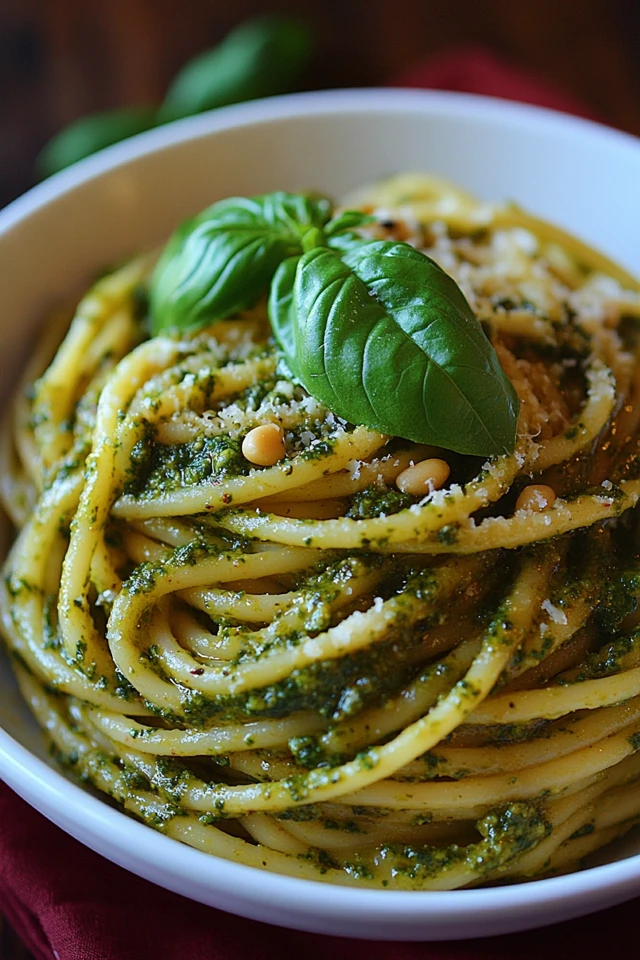
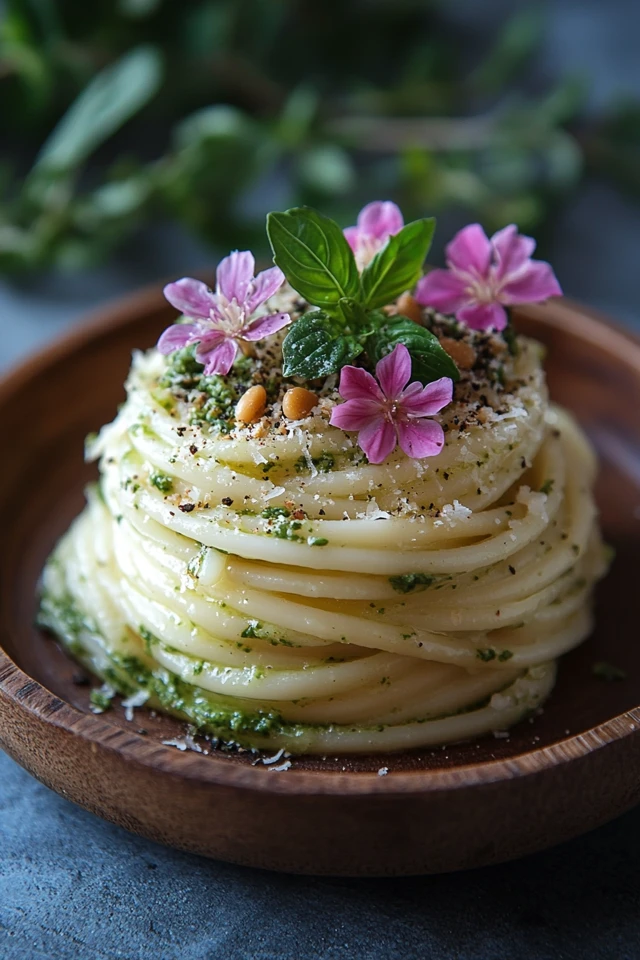
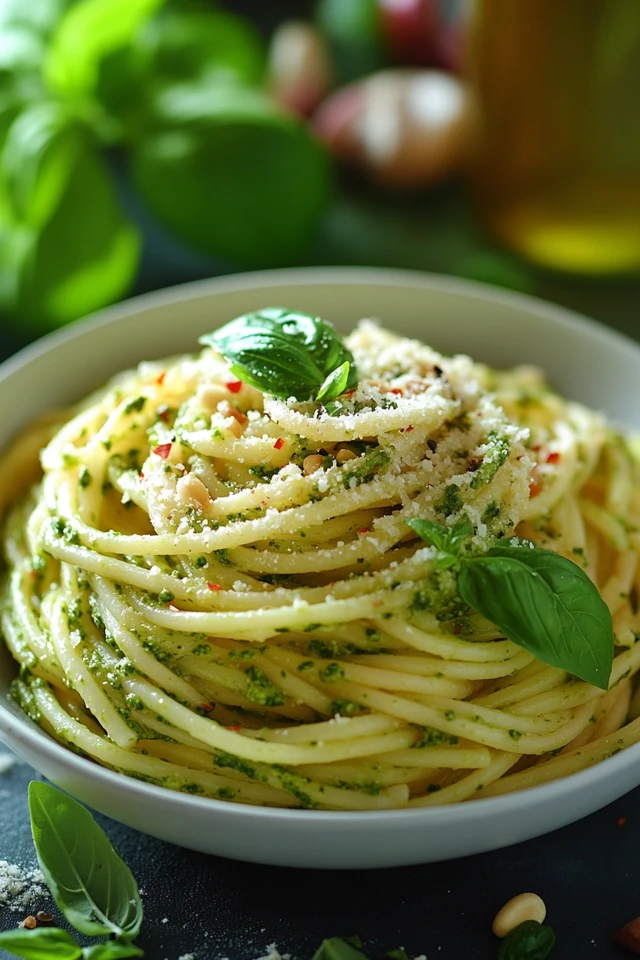
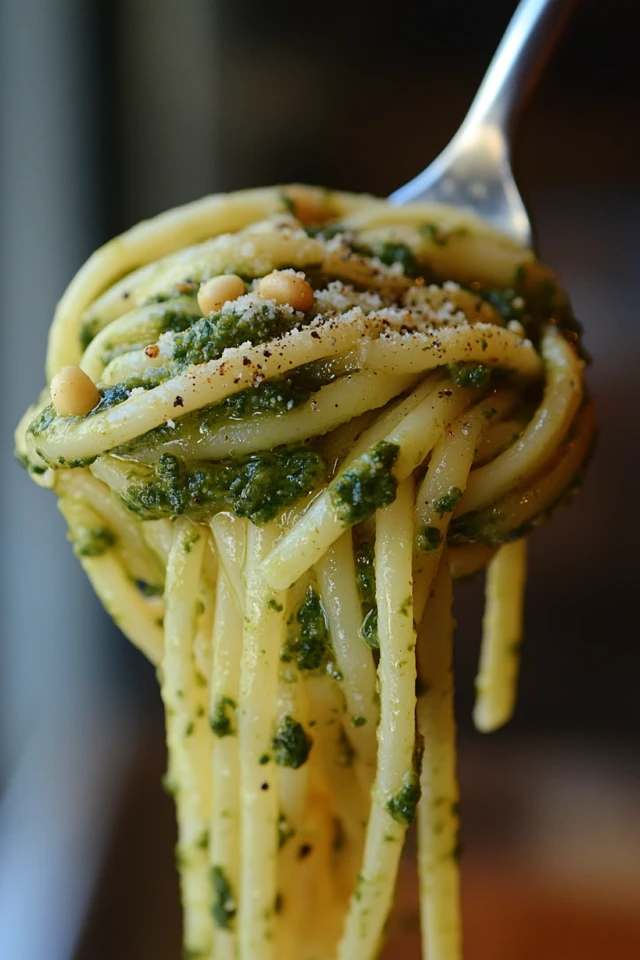
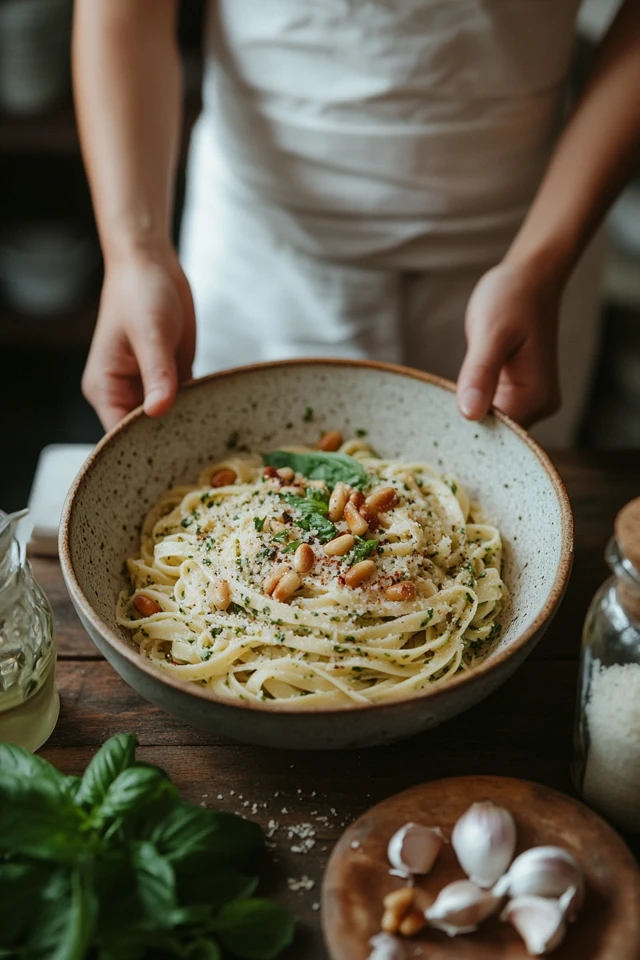
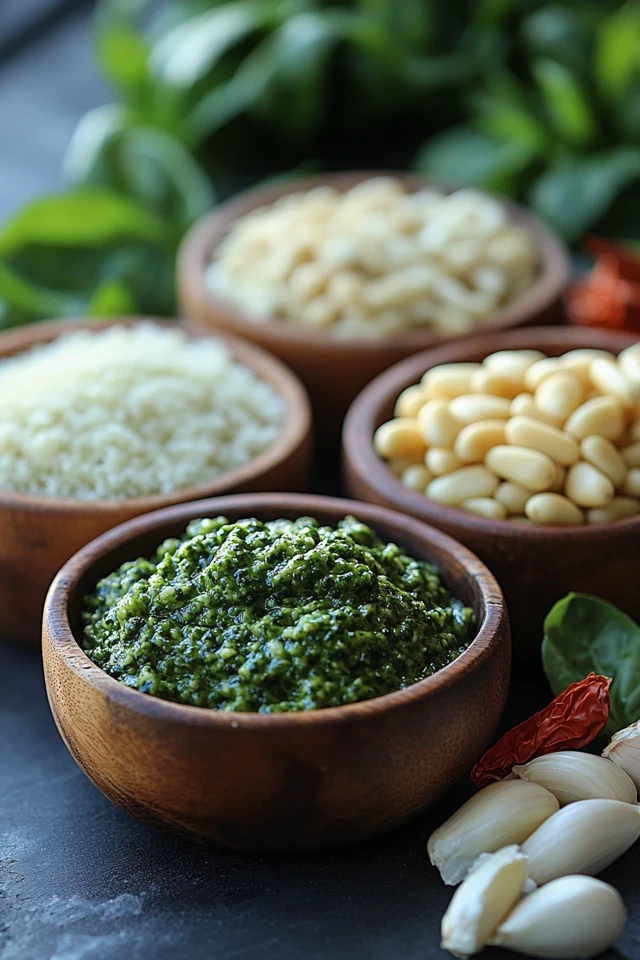
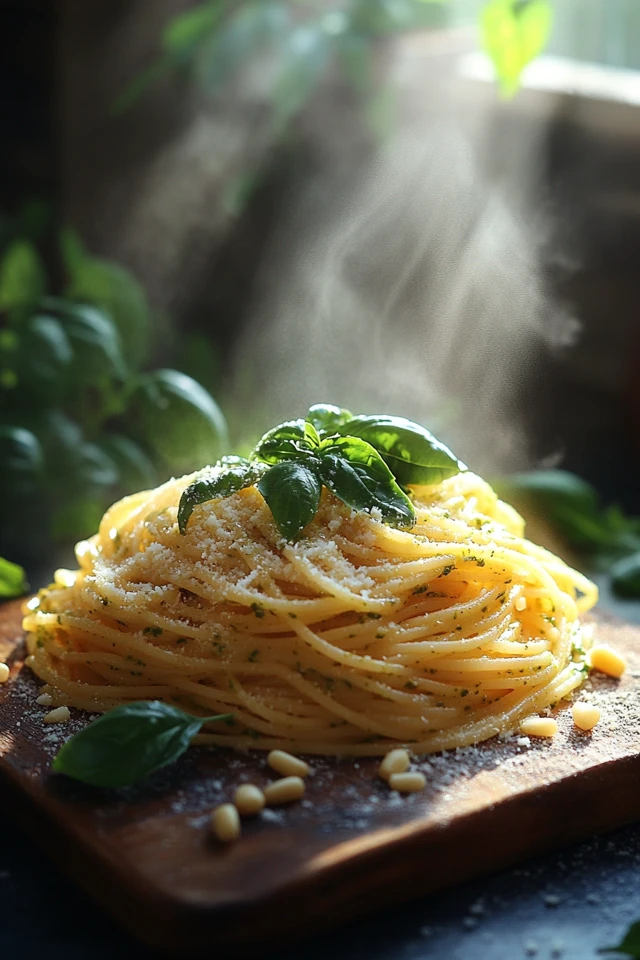
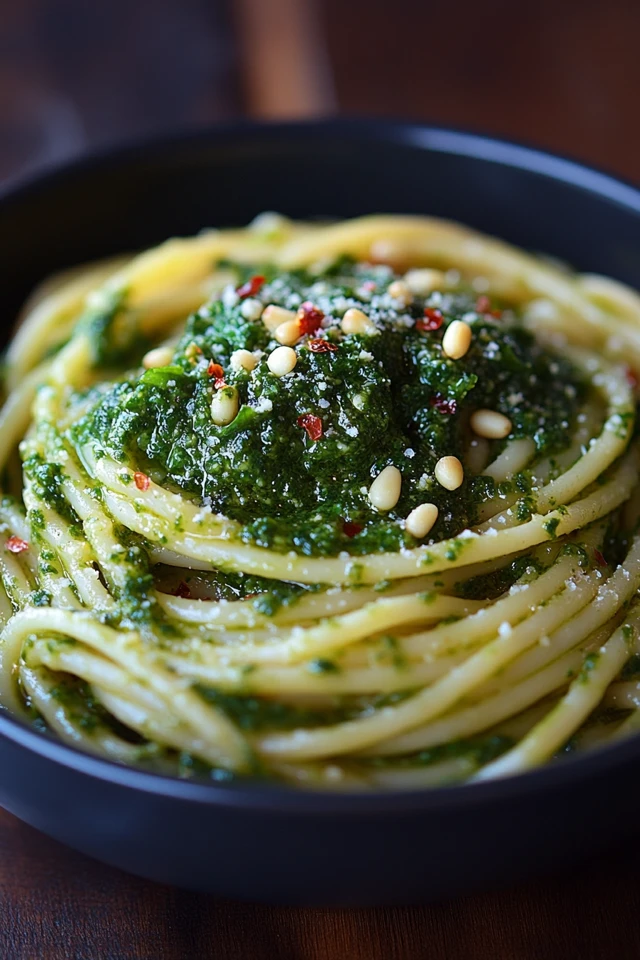
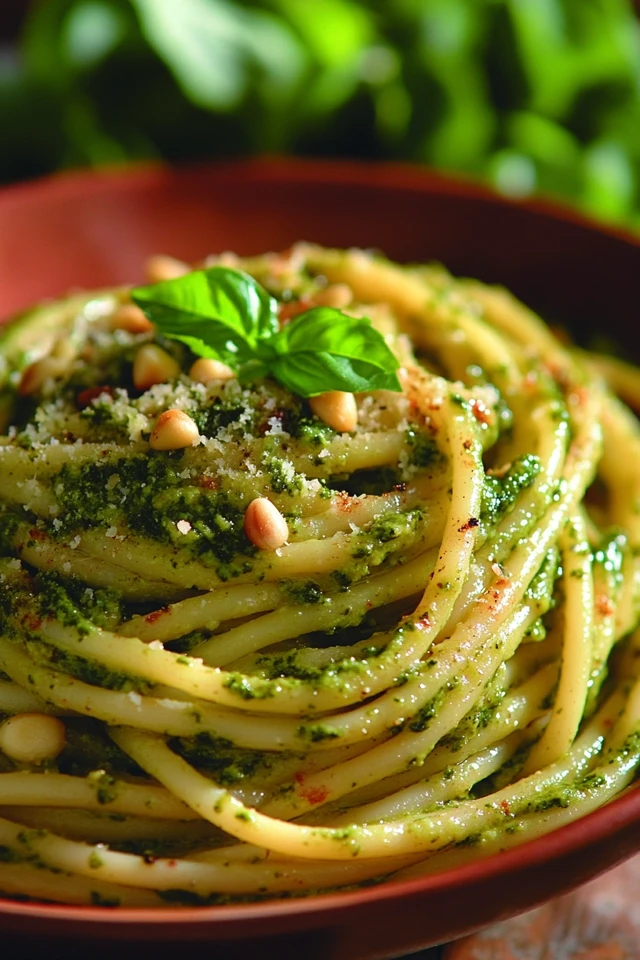
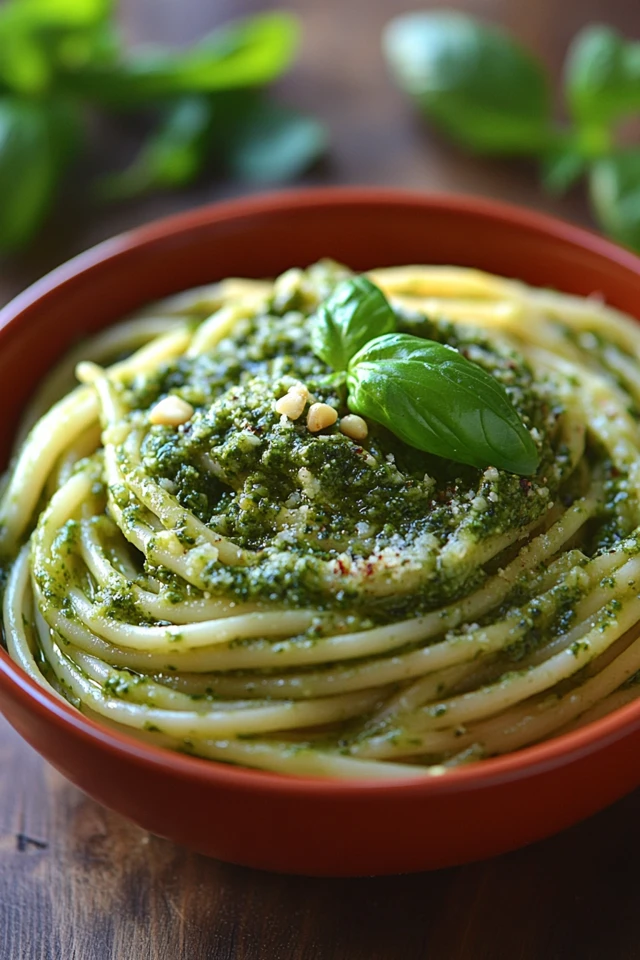
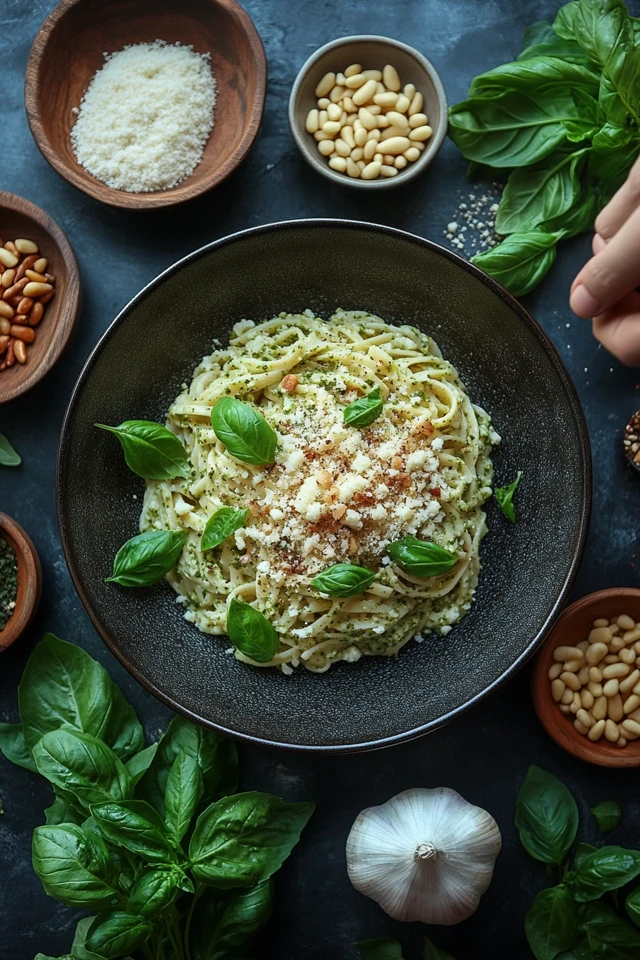
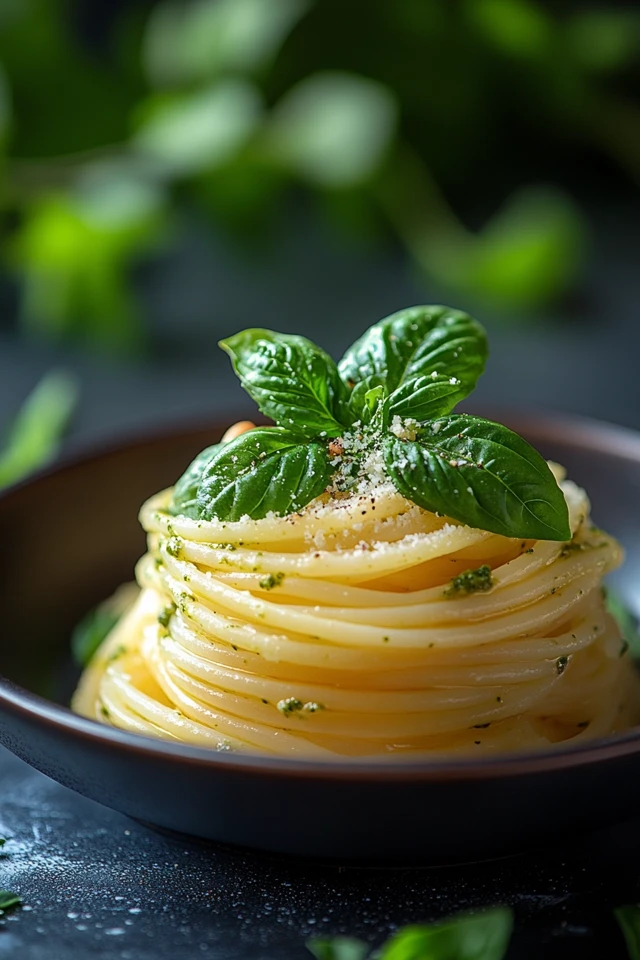
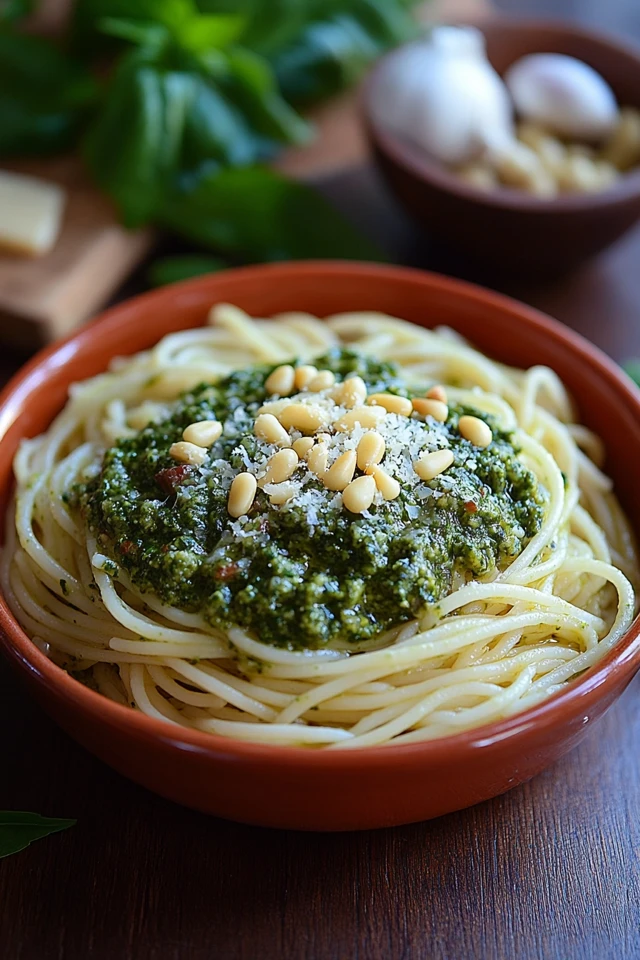
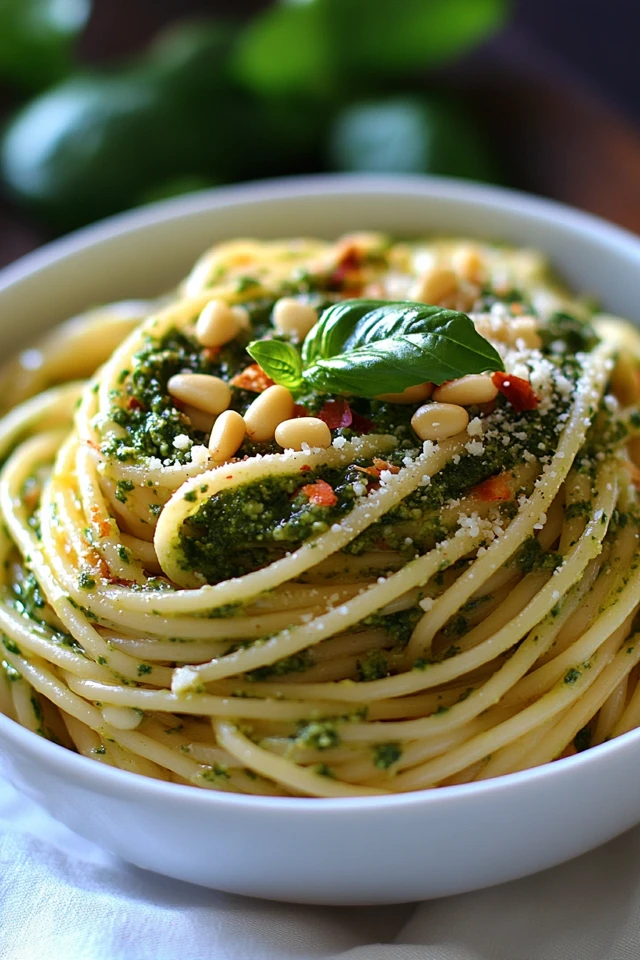
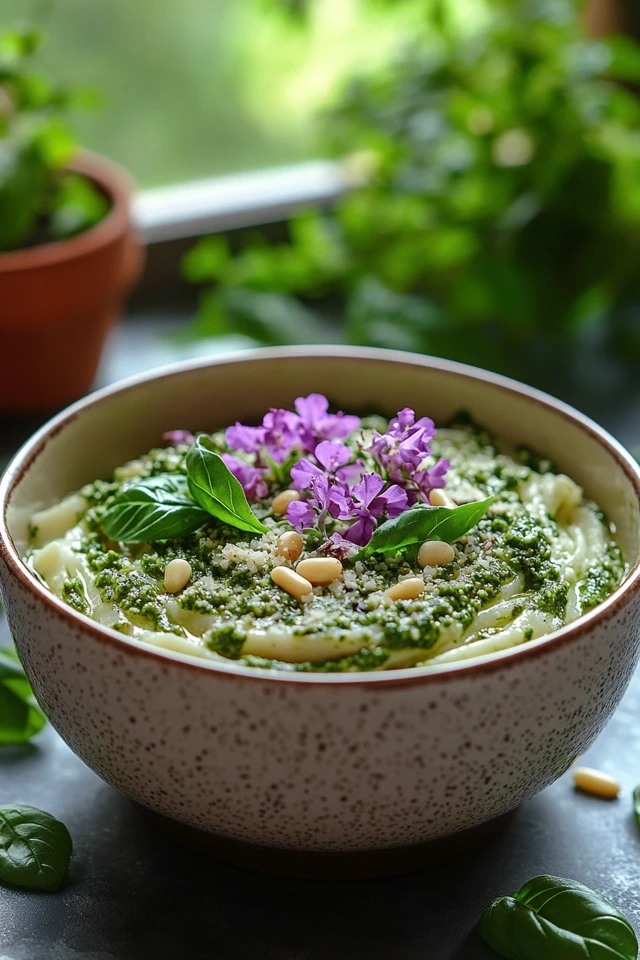
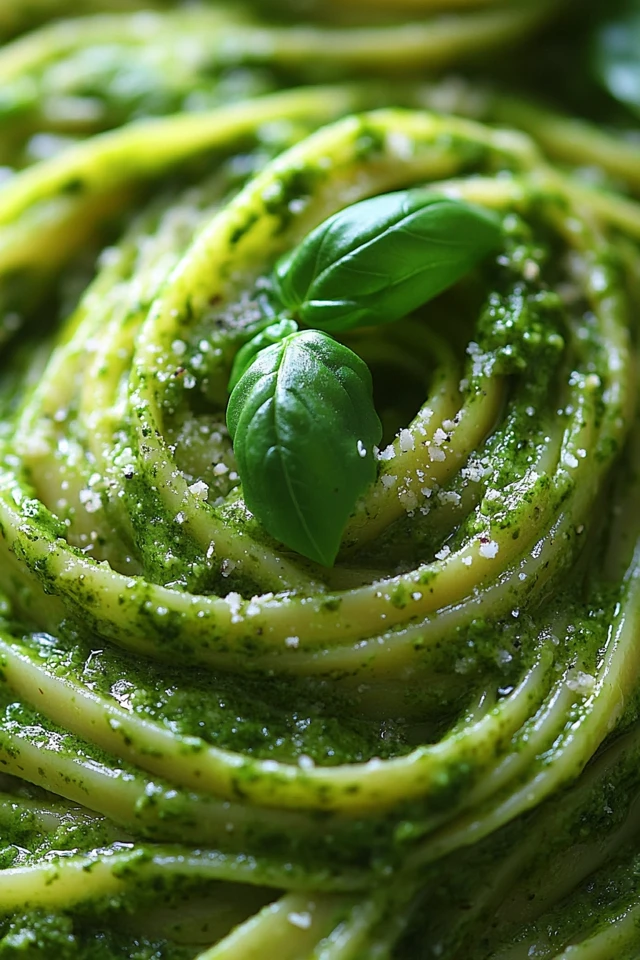
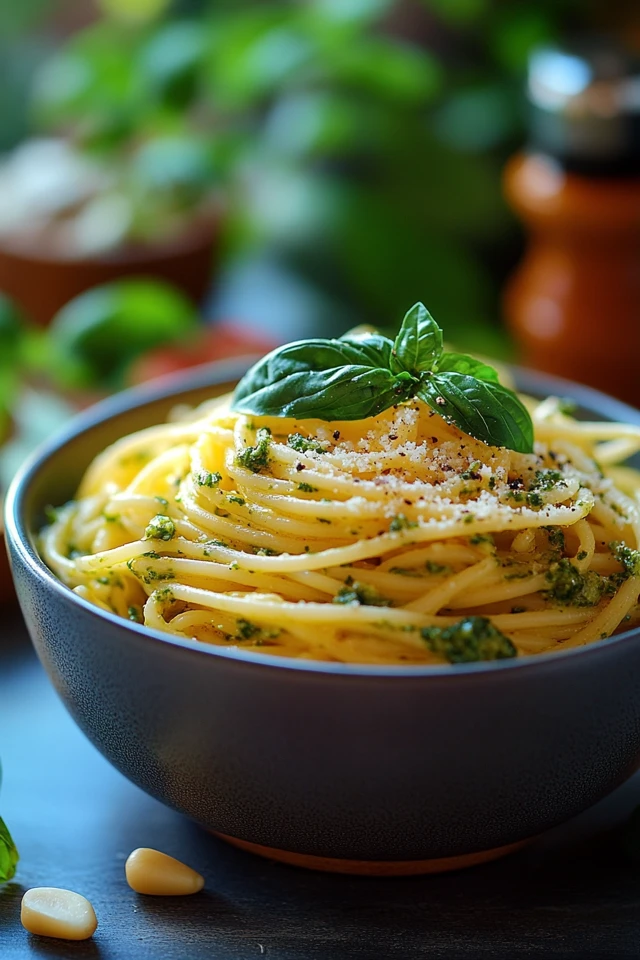
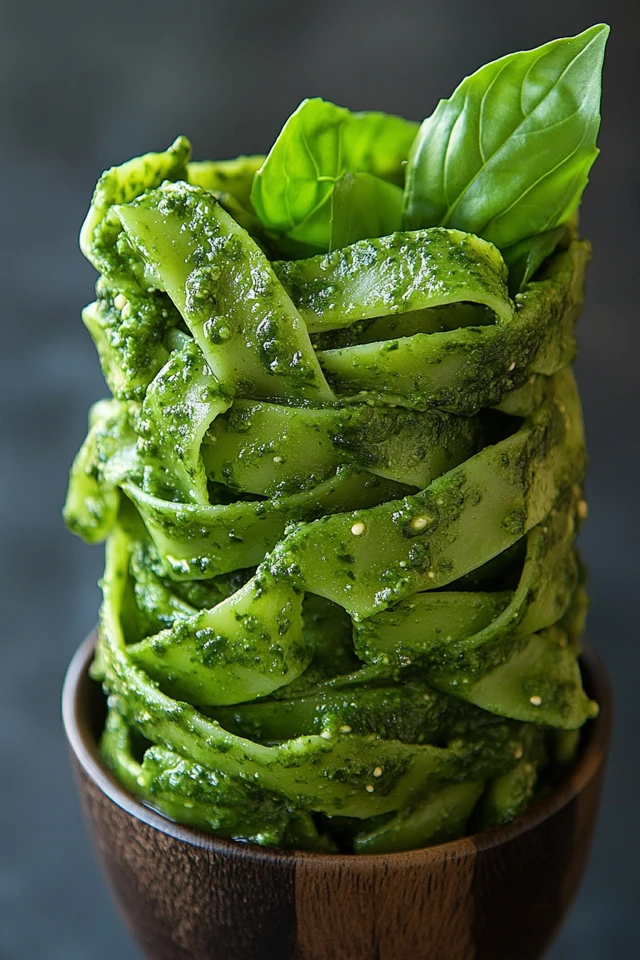
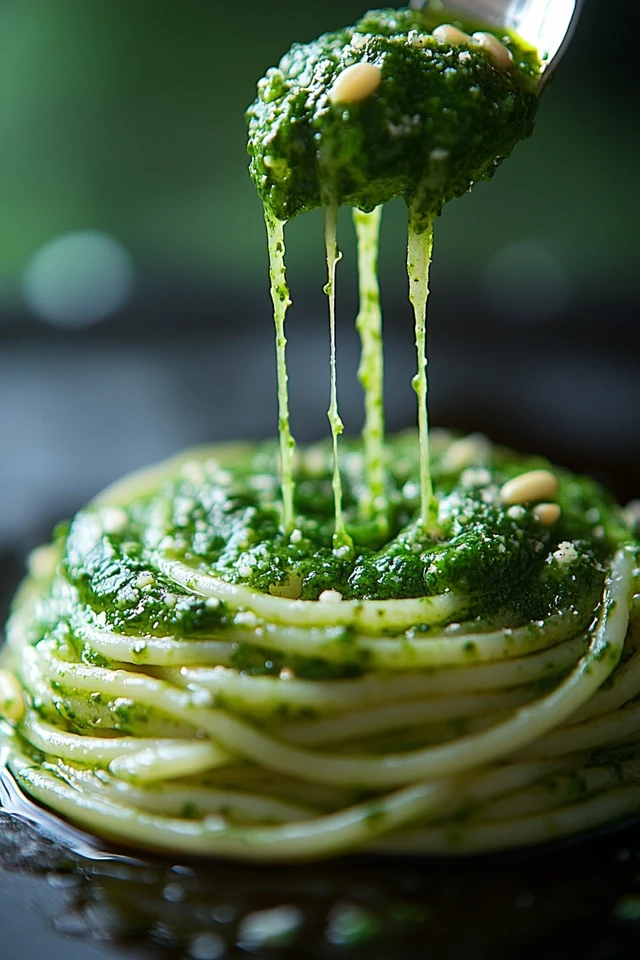
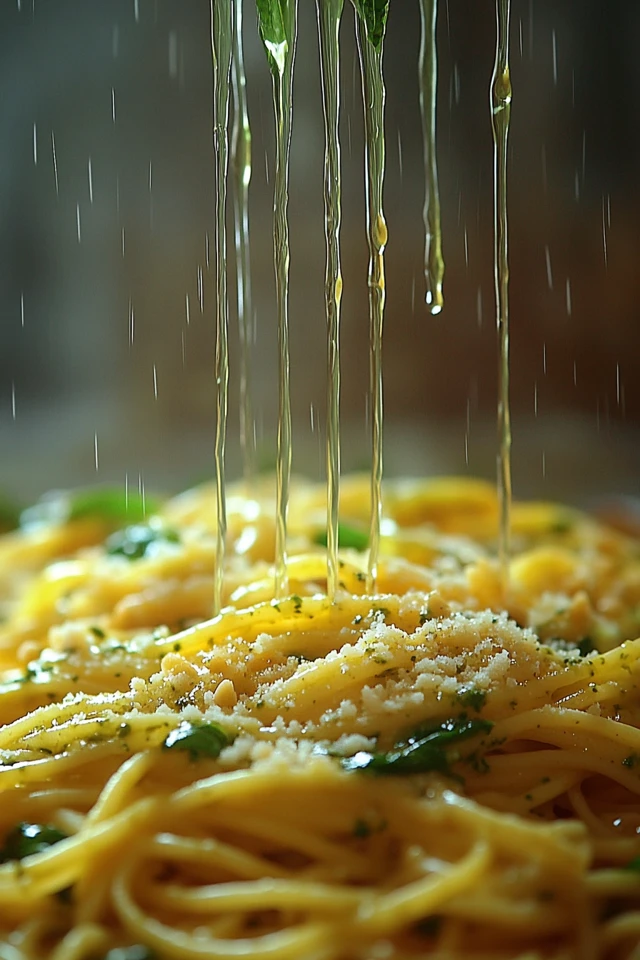
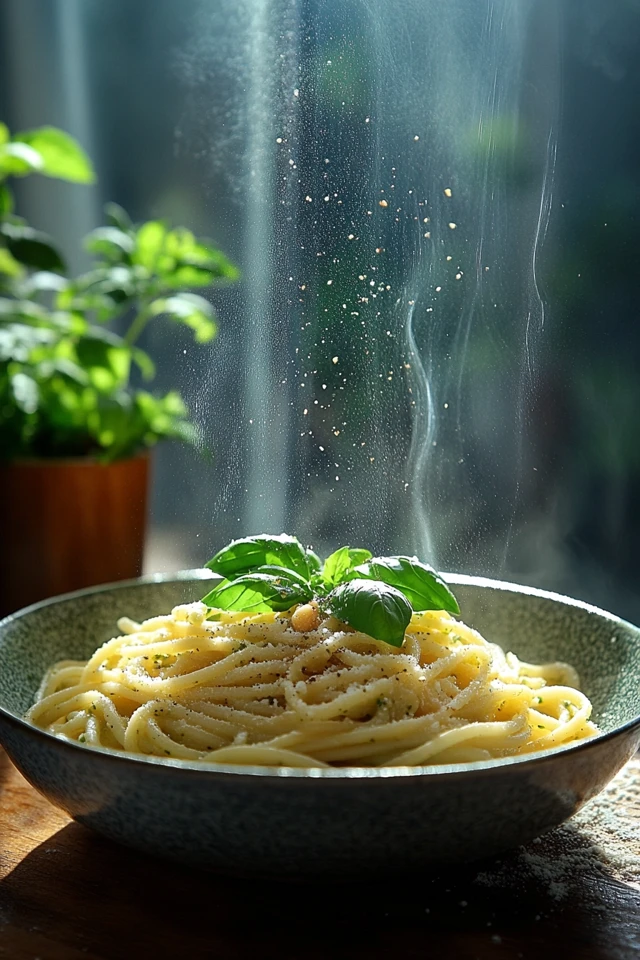
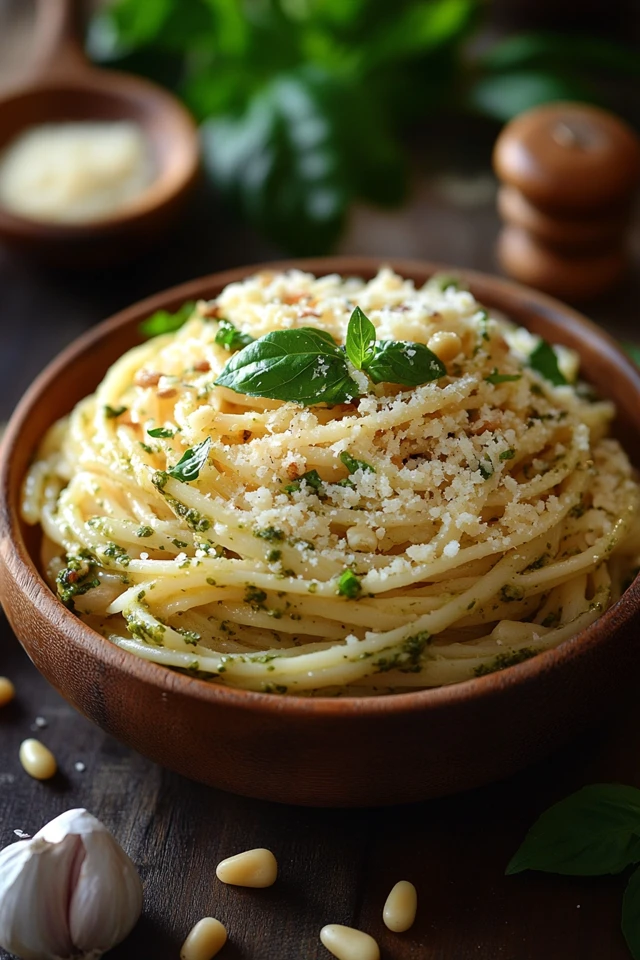
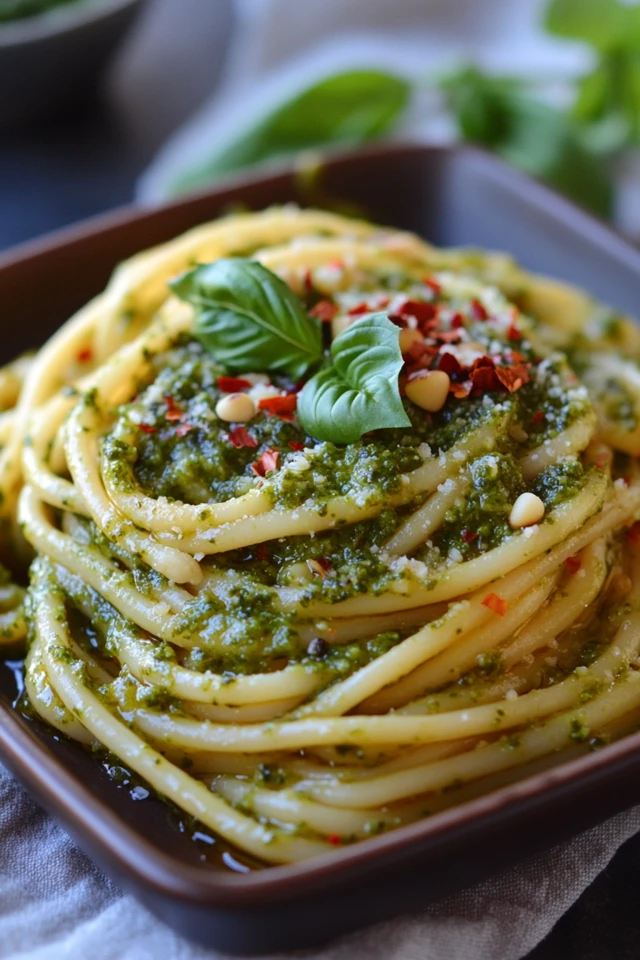
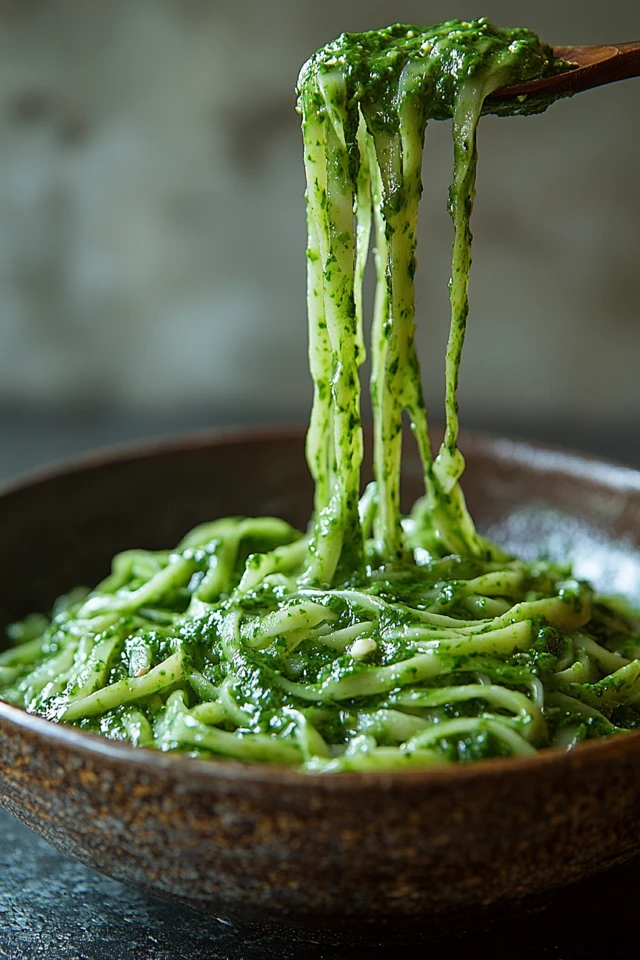
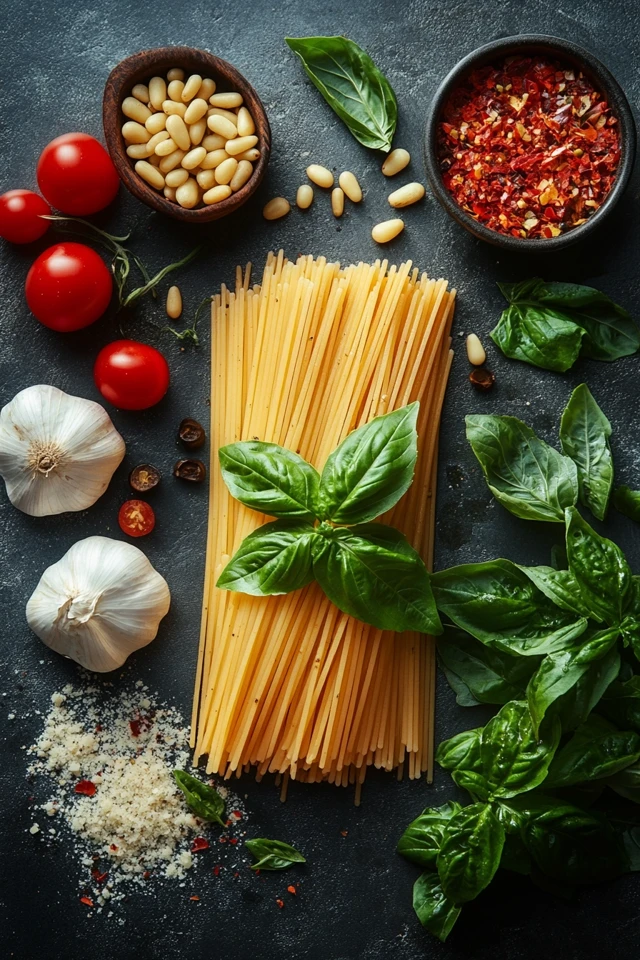

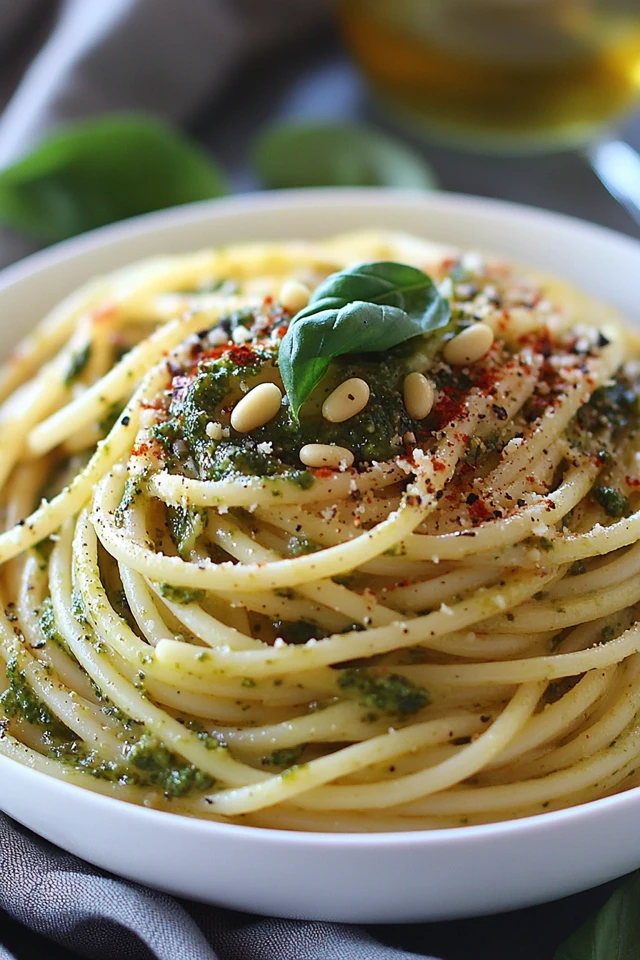
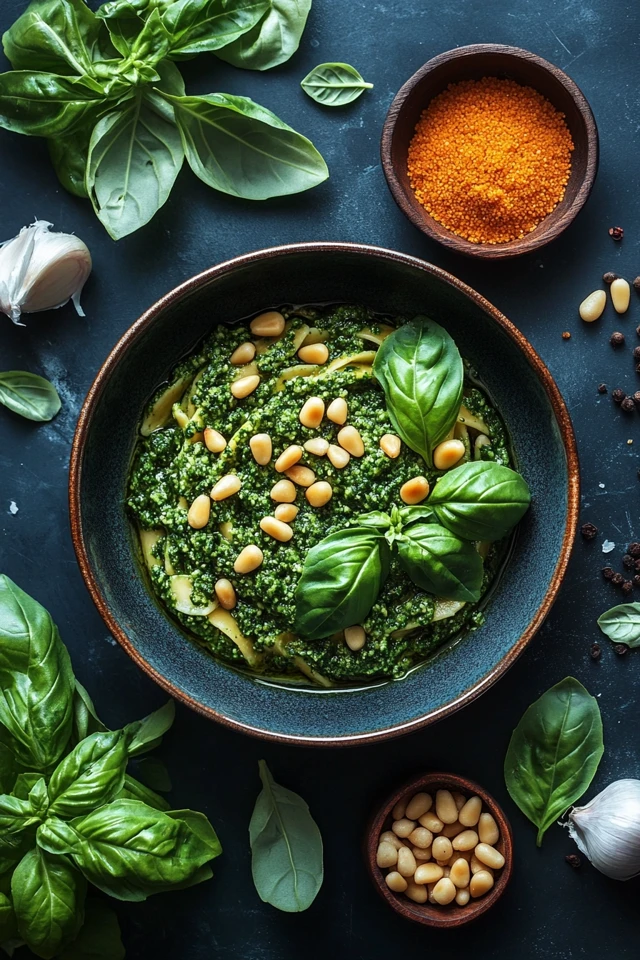
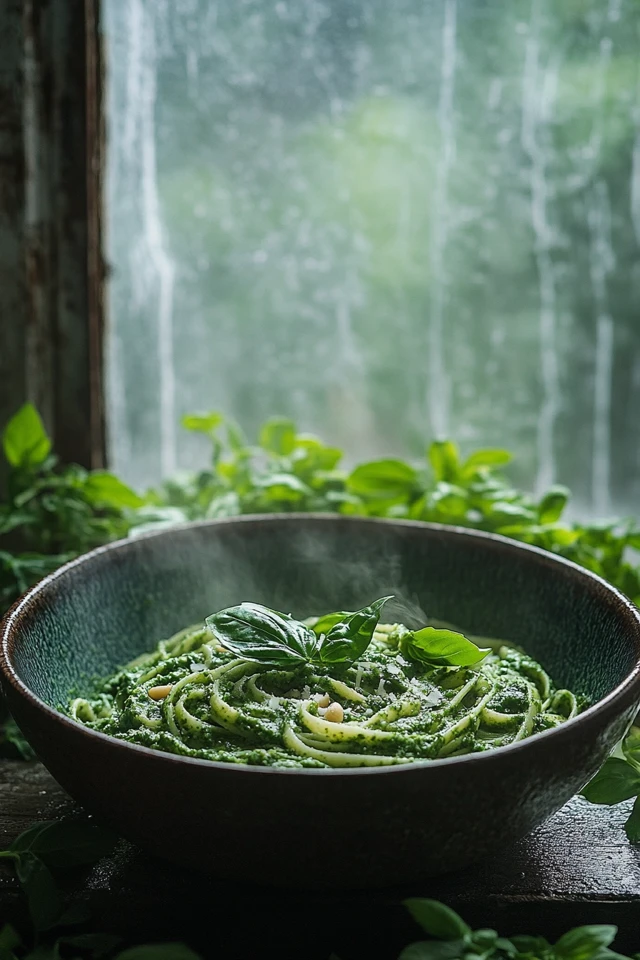
Frequently Asked Questions (FAQs)
1. Can I make the pesto ahead of time?
Absolutely! Vegan Pesto can be made up to a week in advance and stored in the refrigerator. For longer storage, freeze the pesto in ice cube trays and transfer the frozen cubes to a freezer-safe bag. Thaw as needed when ready to use.
2. What can I substitute for pine nuts in the pesto?
You can substitute pine nuts with walnuts, almonds, cashews, or sunflower seeds for a different flavor and texture. Toasting the nuts before adding them to the pesto can enhance their flavor.
3. Is this recipe gluten-free?
Yes! By using gluten-free pasta and ensuring that all other ingredients, including nutritional yeast and soy sauce or tamari, are gluten-free, you can easily make this dish gluten-free. Always check labels to confirm the gluten-free status of store-bought products.
4. How can I make the pesto creamier?
For a creamier pesto, add more olive oil or incorporate a tablespoon of vegan cream cheese or soaked cashews into the blender. Blending for a longer time can also achieve a smoother consistency.
5. Can I add vegetables directly into the pasta?
Absolutely! Incorporate vegetables like cherry tomatoes, baby spinach, or roasted bell peppers directly into the pasta for added flavor, color, and nutrition.
6. How do I prevent the pasta from sticking together?
To prevent pasta from sticking, ensure you use a large pot with plenty of boiling water and add a generous amount of salt. Stir the pasta occasionally during cooking. Rinse briefly with cold water after draining if not serving immediately.
7. Can I use different types of pasta?
Yes! You can use any type of pasta you prefer, such as penne, fusilli, farfalle, or even gluten-free varieties. Choose shapes that hold the pesto well for the best experience.
8. How do I store leftovers?
Store any leftover pasta in an airtight container in the refrigerator for up to 4 days. Reheat gently on the stovetop or microwave, adding a splash of water or olive oil to loosen the sauce if needed.
9. Can I add protein to make it more filling?
Absolutely! Add plant-based proteins like grilled tofu, tempeh, chickpeas, or roasted vegetables to make the dish more filling and nutritionally balanced.
10. What can I serve alongside this pesto pasta?
Serve your Vegan Italian Pesto Pasta alongside a fresh green salad, garlic bread, roasted vegetables, or a bowl of soup for a complete and satisfying meal.
About the Author
Welcome to Vegan & Plant-Based Kitchen! I’m Julio Arco, a passionate vegan chef dedicated to creating delicious, easy-to-make plant-based recipes that nourish both body and soul. Since embracing a vegan lifestyle in 2010, I’ve been on a culinary journey to explore the endless possibilities of plant-based cooking. From vibrant salads to hearty mains and indulgent desserts, my mission is to inspire and empower you to embrace a compassionate and healthy lifestyle through wholesome food.
Join me on this journey as we explore diverse flavors, experiment with fresh ingredients, and celebrate the beauty of plant-based living. Let’s create, share, and enjoy the goodness of vegan cooking together!
Disclaimer: This blog post is intended for informational purposes only. Always consult with a healthcare professional before making significant changes to your diet.

